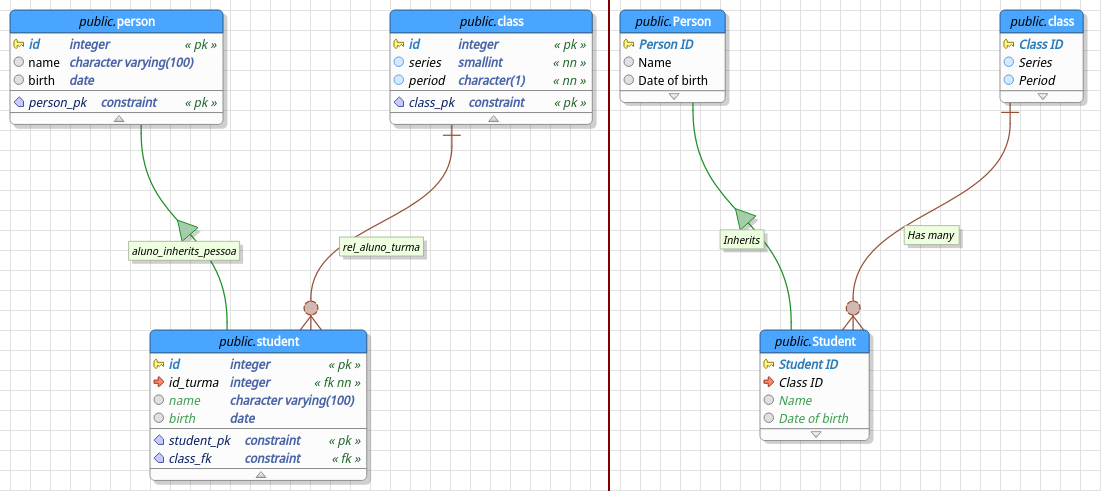7.17. Compact view of the model
Thinking of those database designers who constantly need to deal with clients without much technical knowledge related to database being constructed but still need to discuss the model with them the compact view of the model was introduced. Basically, this feature hides columns types and constraints descriptors making tables smaller and the whole model better to visualize. Also, the user can assign friendly names (or aliases) to the objects in order to facilitate the understanding by the audience hiding technical specifications that may not be useful in certain situations. The compact view is a persisted state, which means, if you save and close the model and then reopen it the objects will be presented in the compact mode. You can toggle this mode by clicking the icon ![]() on the control toolbar at the main window. The objects that accept aliases in their respective editing forms are: tables, views, relationships, schemas, columns, constraints, indexes, rules, triggers and policies.
on the control toolbar at the main window. The objects that accept aliases in their respective editing forms are: tables, views, relationships, schemas, columns, constraints, indexes, rules, triggers and policies.

This section closes the last chapter that describe all features available in pgModeler. Now, I hope that beginners and expert users can be able to use the tool more comfortably in their daily job. The important message to be given after detailing some tricks about pgModeler is that, like many other softwares, it offers different ways to achieve the same result as we could see in many chapters of this documentation. In the next chapter we'll see advanced topics that are not necessarily related to the modeling and database management but they somehow can be useful for expert users.